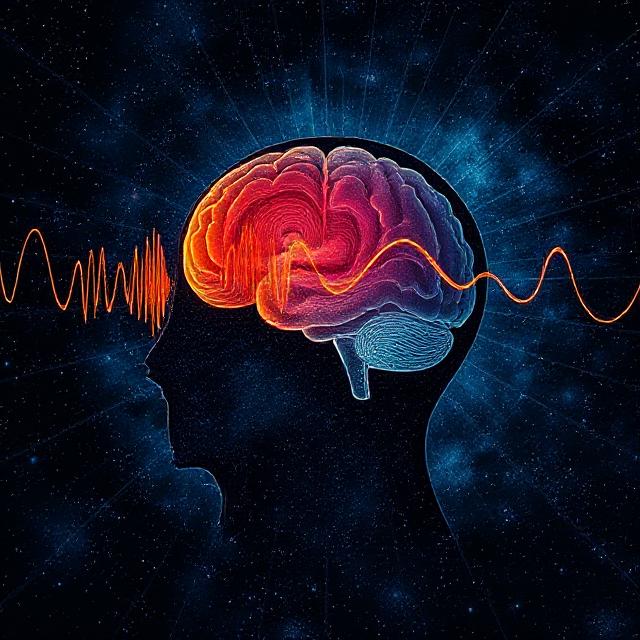
Table of Contents
How Long It Takes to Enter Each Brainwave State: Timing Your Mental Waves
TL;DR
Your brain cycles through five primary brainwave states—beta, alpha, theta, delta, and gamma—each associated with different mental functions. The time it takes to enter these states varies by activity, practice, and individual differences. For example, beta waves dominate wakeful alertness almost instantly, alpha waves may arise within minutes of relaxation, theta appears after 5–15 minutes of deep meditation or early sleep, delta waves emerge in deep sleep after 20–30 minutes, and gamma bursts occur briefly during moments of insight or lucidity.
Introduction: Why Timing Brainwave Transitions Matters
Understanding how quickly your brain enters different brainwave states can help you optimize your mental performance, relaxation, creativity, and sleep quality. Whether you want to get into a focused flow state, enter deep meditation, or fall asleep faster, knowing the timing and triggers of brainwave transitions can give you greater control over your mental landscape.
Overview of Brainwave States and Their Functions
| Brainwave State | Frequency Range | Mental State/Function |
|---|---|---|
| Beta | 12–30 Hz | Alertness, active thinking |
| Alpha | 8–12 Hz | Relaxation, calm focus |
| Theta | 4–8 Hz | Deep relaxation, creativity, early sleep |
| Delta | 0.5–4 Hz | Deep sleep, restoration |
| Gamma | 30–100+ Hz | High-level cognition, insight |
How Long It Takes to Enter Each Brainwave State
1. Beta Waves: Instant Alertness and Thinking
- Onset time: Immediate upon wakefulness or mental activity.
- How it happens: Beta waves dominate when you’re alert, problem-solving, or actively engaged. The brain is naturally in beta during most waking hours.
- Typical duration: Persistent as long as focus or mental effort continues.
2. Alpha Waves: Relaxation in Minutes
- Onset time: Typically 2–10 minutes after beginning relaxation or closing your eyes.
- How it happens: Alpha waves appear when you reduce sensory input, like during meditation, light daydreaming, or calm focus.
- Typical duration: Sustained during relaxed wakefulness or meditation; fades when attention sharpens.
3. Theta Waves: Deep Relaxation and Creativity
- Onset time: 5–15 minutes into deep meditation, daydreaming, or early stages of sleep (NREM Stage 1).
- How it happens: Theta waves dominate during the transition from wakefulness to sleep, hypnagogic states, and creative mental states.
- Typical duration: Can last several minutes in meditation or up to 10–20 minutes during early sleep phases.
4. Delta Waves: Deep Sleep Restoration
- Onset time: Usually 20–40 minutes after falling asleep, during NREM Stage 3 (slow-wave sleep).
- How it happens: Delta waves signal the deepest restorative sleep phase where physical and mental healing occur.
- Typical duration: Sustained for 20–60 minutes in each sleep cycle, recurring multiple times per night.
5. Gamma Waves: Momentary Insight and High Cognition
- Onset time: Seconds to minutes during intense focus, problem-solving, or moments of insight.
- How it happens: Gamma bursts are brief and correlate with conscious perception, memory encoding, and lucid dreaming.
- Typical duration: Episodic, lasting from milliseconds to a few seconds during peak cognition or awareness.
Factors Influencing How Fast You Enter Brainwave States
- Practice and training: Experienced meditators or lucid dreamers can enter alpha, theta, or gamma states faster than beginners.
- Stress and environment: High stress may prolong beta dominance and delay relaxation waves.
- Substances: Caffeine and stimulants increase beta waves; relaxation aids like certain herbs can promote alpha/theta onset.
- Sleep quality: Poor sleep may disrupt delta wave timing.
- Individual differences: Genetics, age, and brain health impact wave onset speed.
How to Speed Up Transition to Desired Brainwave States
- For Alpha: Practice mindfulness meditation, close your eyes, and focus on breathing for 5 minutes.
- For Theta: Use guided deep meditation, binaural beats (4–7 Hz), or hypnagogic visualization techniques.
- For Delta: Prioritize sleep hygiene and minimize disruptions to enter deep sleep quickly.
- For Gamma: Engage in problem-solving, focused attention, or neurofeedback training.
Conclusion: Mastering Your Brainwave Timings
Knowing how long it takes to shift into each brainwave state empowers you to structure your day for peak performance, creativity, and rest. With practice and awareness, you can guide your mind through these rhythms to unlock better focus, deeper relaxation, and rejuvenating sleep.
References
- Buzsáki, G. (2006). Rhythms of the Brain. Oxford University Press.
- Cahn, B. R., & Polich, J. (2006). Meditation states and traits: EEG, ERP, and neuroimaging studies. Psychological Bulletin, 132(2), 180–211.
- Lomas, T., Ivtzan, I., & Fu, C. H. Y. (2015). A systematic review of the neurophysiology of mindfulness on EEG oscillations. Neuroscience & Biobehavioral Reviews, 57, 401–410.
- Klimesch, W. (1999). EEG alpha and theta oscillations reflect cognitive and memory performance: a review and analysis. Brain Research Reviews, 29(2-3), 169–195.
